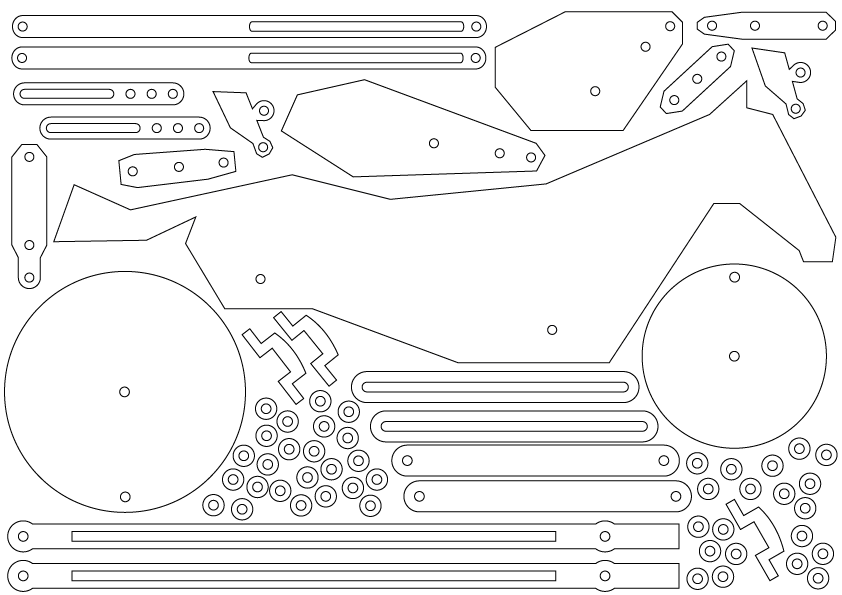“The Horse in Motion” is a sequential series of photos of a galloping horse, created by British photographer Eadwuard Muybridge in 1877. With this work, he wanted to analyze whether all of the animal’s legs are in the air at a certain moment during movement or not. In this project we implemented Muybridge’s horse as a kinetic sculpture.
– A work with Maria Ettelt –
The Idea
Muybridge recorded the horse’s movement in 16 individual images. Then, he watched it as a film to analyze the movement. At the same, his project resulted in one of the first films in human history.


Our Analysis
In order to recreate Muybridge’s horse as faithfully as possible, we studied the image sequence carefully. The horse and especially the position of the legs were drawn for each individual picture. During movement, the ankle joint of each leg follows a curve that we reconstructed (red line). This curve must be realized by the mechanics.
Production of the Prototype
The horse’s body and the required mechanical parts (rails, wheels,…) were designed in Adobe Illustrator and cut out with a laser cutter. We used MDF (medium density fibreboard) to build the prototype.


Analyzing the Prototype
The most complex part of the project was making the horse’s leg movements appear as naturally as possible. We have found an optimal setting where only two wheels and 6 rails are sufficient to drive the motion, as you can see in the accompanying figure.
On the next step, we doubled the size and cut it out of Acryl.
The building of the sculpture
In order to stay as close to the original film as possible, we chose black acrylic for the horse. All mechanical parts were made of transparent acrylic. All parts were cut out using a laser cutter. The rotational movement is transferred to the wheels using O-rings and from there to the horse’s legs using rails. Everything is fixed on a 6 mm thick transparent acrylic plate.
Take a look at the movie to see the comparison of the original movie to our sculpture!

